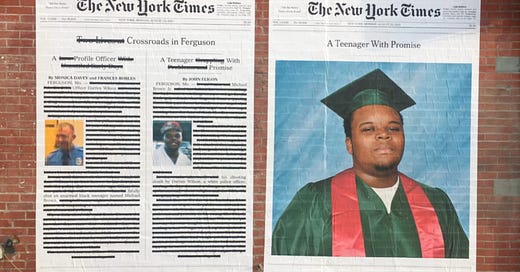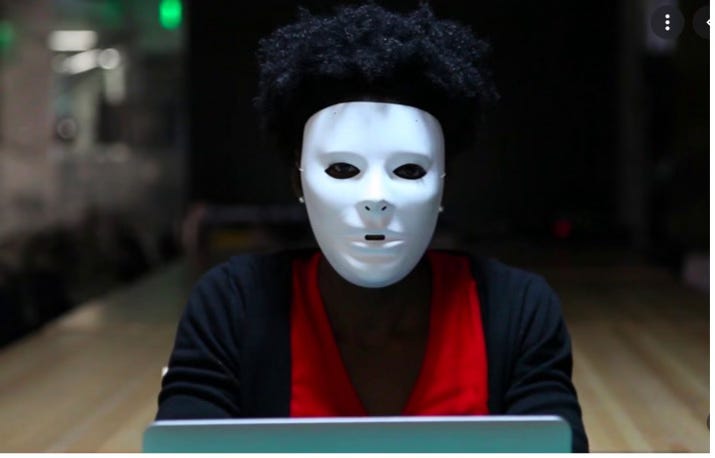I’ve been off cycle while I finished a book that took so long to write that I barely remember when I really started it! Done, done, done! I feel so free! SO LIGHT.
And in the face of a devastation on levels that have challenged the capacity of language to express, this world needs our light always and especially now.
A few of the many things that have been on my mind:
THE FUTURE
Part of what I hear constantly is how many children are in Gaza. Children make up half of the population there.
It is a fact that ignites the moral imagination and creates urgency to honor our common humanity. Or can.
Some weeks ago, it seemed hard to shine a light on a landmark government policy that would hurt our children if not extended. This policy is the enhanced Child Tax Credit, part of the American Rescue Plan from 2021. It provided the largest child tax credit ever and historic relief to the most working families ever. After Republicans let the Child Tax Credit expire, the child poverty rate doubled between 2021 and 2022.
As the incredible public servant leader, Senator Cory Booker put it, “We have now proved something pretty phenomenal and at the same time, pretty obscene. And what we've proved is that poverty for children in America is not some accident. It's a policy choice.” Where was the collective will to extend it? Will we see it as our political leaders continue their efforts for our common good?
https://www.whitehouse.gov/child-tax-credit/
COUNTERNARRATIVES
What is the relationship between narratives, media, and justice? This is the focus of my Harvard class tomorrow. One artist who we’ll focus on is Alexandra Bell. A trained journalist-turned-artist, her work takes the newspaper’s front page as her canvas. How does the relationship between image and text reflect, challenge, or amplify our ideas of who belongs and who counts in society?
One of her most known works? A dissection of the coverage of the killing of Mike Brown on the front page of the New York Times. There she crossed out the headline, “A Teenager Grappling with Problems and Promise” and inserted the reality: “A Teenager with Promise.” She created more than a few stunning works of public art. She diagrammed the sort of criticality required to imagine a more just future for all.
A great primer on her work is here, in a short film published by The New Yorker. My students are watching this too.
As a discussion prompt, I’m asking my students not about conceptual art, or the word and text movement. I could. Instead, I’m asking them about when they see counternarratives in their own lives. What stories challenge bias, challenge stereotype, and what are the most effective tactics? I’d love to hear your thoughts in the comments.
CRIMINAL JUSTICE
In a few weeks, in November, I’ll be teaching at a men’s high/max security prison in Connecticut. Yale University has an extraordinary Prison Education program there founded by Zelda Roland. We met when she interned for a Biennial I curated. She was tenacious, visionary, and empathic then. Now it is magnified to a power of 10.
Teaching about the Vision & Justice initiative in a prison is calling on me to get clear about stakes. How do we honor the dignity of all human life? How do you find empowerment in a state of utter confinement?
My friend and colleague Nicole Fleetwood has been grappling with this work about the power of art in the context of mass incarceration for some time. You can check out her book here and the related exhibition and ongoing project here.
Let me pause here to emphasize that watching Nicole present art made by those in prison was one of few times I have seen people gasp at a work of art in shock and delight, or shift, crane, and cover their mouths in a scholarly presentation. This brief presentation was part of the Vision & Justice Convening at Harvard. As she showed images, I can still recall the audible gasps in the room, physical movements, and gestures. What constitutes the environment of the artist, what walls contain a studio, and who an artist could be was being expanded in that room in that moment. Watch the panel discussion here, with Nicole’s presentation starting at 20:34.
What images would you bring up if you were teaching alongside me? Let me know in the comments!
ENVIRONMENTAL JUSTICE
Growing up in New York City, taking public transportation at ages that now seem inconceivable, I noticed what we call food deserts right away. Affluent places? Great food right around the corner. Less well off, not an apple for miles. My 10-year-old self could correlate money and health clearly.
Well, Speaker or no Speaker of the House, that Farm Bill is still coming up, and the impact of that relationship is all over our food chain. Another documentary out now makes it plain: The Smell of Money.
AI and JUSTICE
Joy Buolamwini has a book coming out called Unmasking AI. I love its focus: protecting what is human amidst our embrace of technology.
As a researcher at MIT, interested in coding, Joy found that when her own dark brown skin was in front of the camera, it wouldn’t recognize her at all. It was not long before she realized that to do her work effectively, she would have to code in a white mask.
Joy is known for uncovering what she terms “the coded gaze”— evidence of encoded discrimination and exclusion in tech products. The book is about how she galvanized the movement to prevent AI harms by founding the Algorithmic Justice League.
I invited her to speak with the great Darren Walker, President of the Ford Foundation, and my dear colleague, the legend, LaTanya Sweeney at the Vision & Justice Convening, a two-day creative convening that examined the role of the arts in understanding the nexus of art, race, and justice. Here they are:
I’m honored to be part of her book tour with a talk on Sunday, Nov. 5th at the MIT Museum from 1-2:30pm. Please join us if you’re in Cambridge!
FIELD TRIPS
How DO we focus the collective moral imagination? I’ve been thinking of this in the context of the work of Deborah Roberts, an artist whose work I’ve long admired. She creates imagery about children that highlights these injustices. She is as extraordinary as is her work. I was so honored when she asked me to interview her for her first major book.
She and I will also be in conversation at Stephen Friedman Gallery on Saturday, Nov. 4th from 4-6pm in New York City. RSVP to: rsvpnewyork@stephenfriedman.com.
We’ll be speaking together as part of a panel at SXSW in March 2024 entitled Design as a Medium Within Visual Art.
A Few Upcoming talks:
The Gibbes Museum Distinguished Lecture Series, Nov. 1st, 6pm, Charleston, SC.
Presentation to Isaac Julien, American Academy in Rome 2023 Gala, Nov. 2nd, New York City
In Conversation with Deborah Roberts, Stephen Friedman Gallery, Nov. 4th, 4-6pm, New York City
Unmasking AI with Joy Buolamwini, Sunday, Nov. 5th, 1-2:30pm, Cambridge, MA
MASS Art, Nov. 7th, 6pm, Boston, MA
I’m very much off sabbatical now. Just off the after talks for Muhlenberg College Center for Ethics, and another for the Gartner conference and Instructional Coaching Group.
Take home assignment
On Nov. 3rd, NYAD is out on Netflix. What singular goal would you risk your life to achieve? Is there one? If so, what are you doing about it? Watch this film. It is worth your 2 hours.
See you next week!
Sarah








Is this a dream?! Thrilled that you are offering your work within this digital space, Prof. Lewis!
One thing I have been thinking about lately is images of climate crises (mostly aerials or large scale) that permeate our imaginations. As with food deserts, representations of climate disasters directly relate to social injustices, but highly praised images often focus on degradation of the landscape rather than of its people. But I wonder how Latoya Ruby Frazier’s work, “Flint is Family,” can teach us how to understand the infrastructure of a climate crisis, in her case water access, while also making its agents more visible at various scales. Or that of Gordon Parks (!!) in Gloucester and Pittsburgh, 1940s.
Excited to follow V&J through its substack journey!
What an incredibly filled and exciting substack sharing. I will be looking at your links and sharing with my own students her in St Louis. As a photographer who works in a landscape so often unseen and within communities and so often unacknowledged, I look to your writing as a grounding place. Thank you, thank you for relevant and urgent work. I look forward to more.